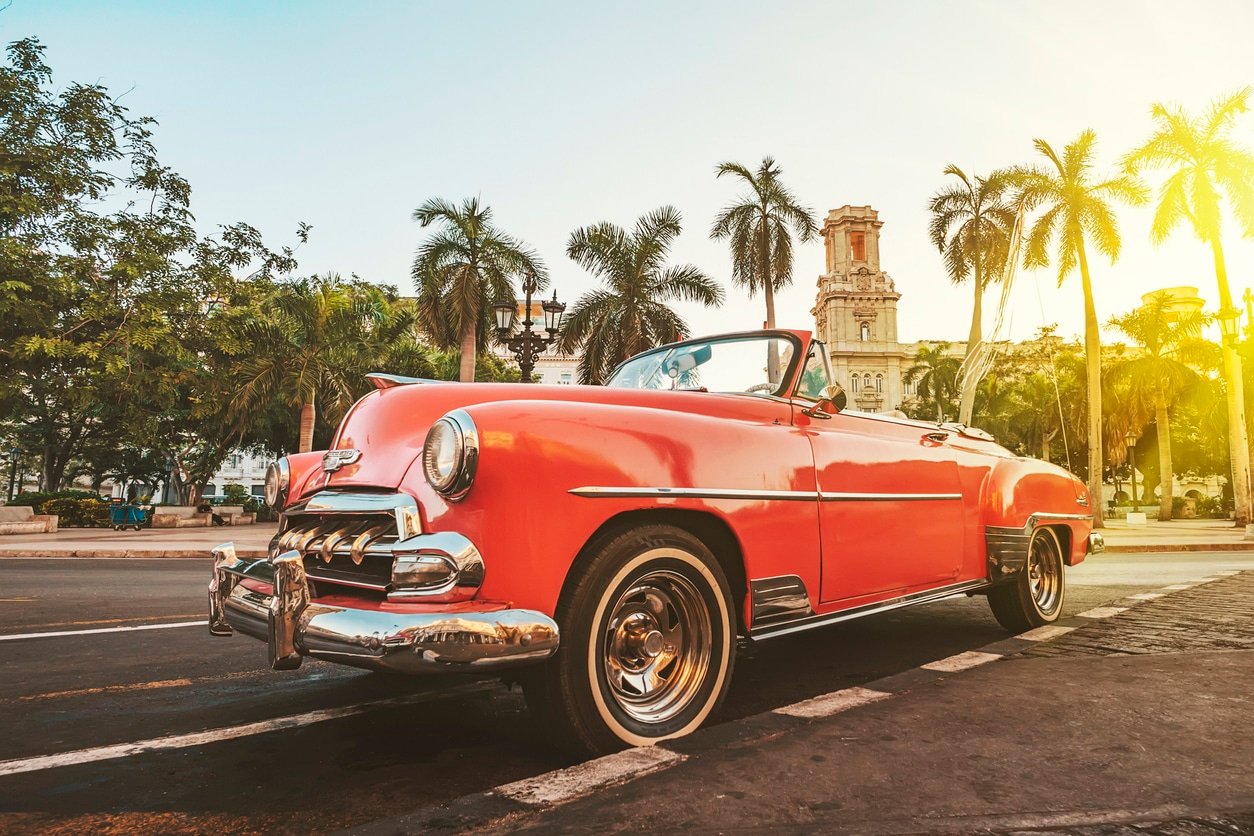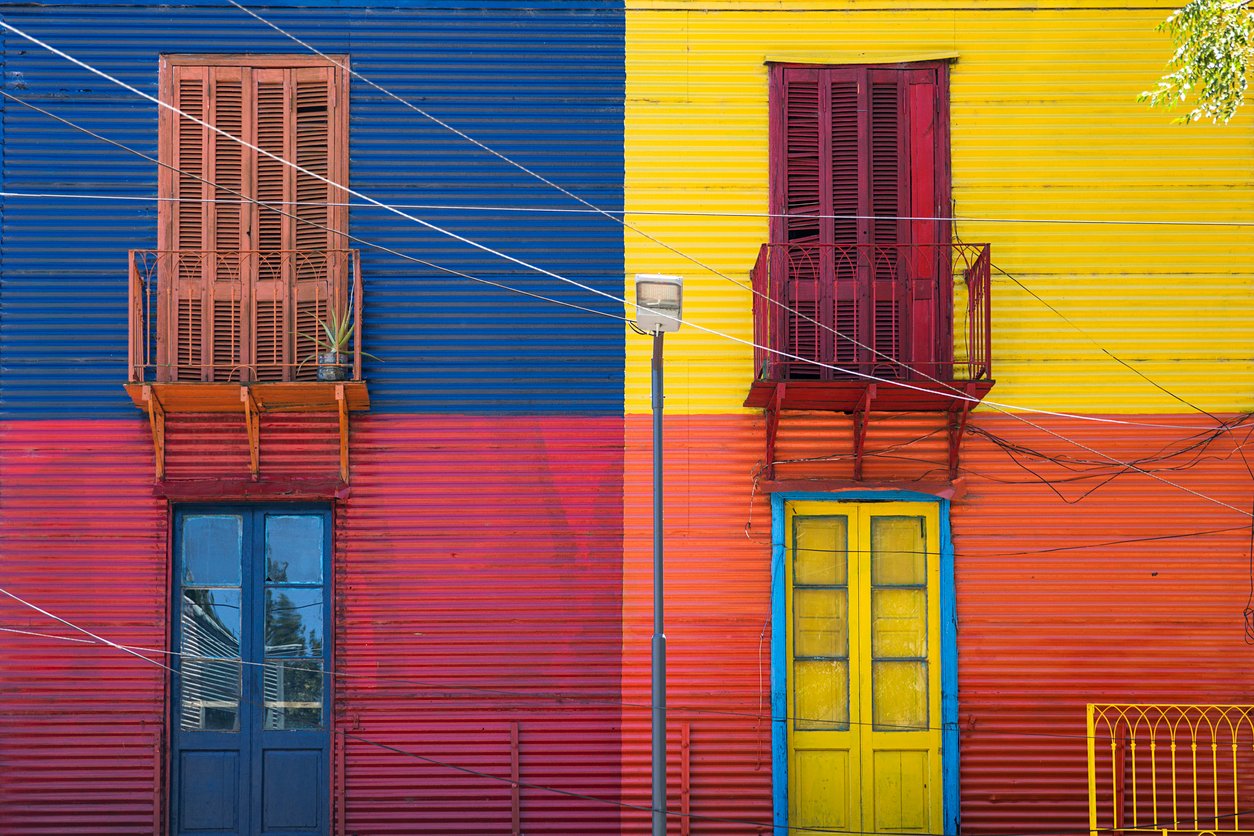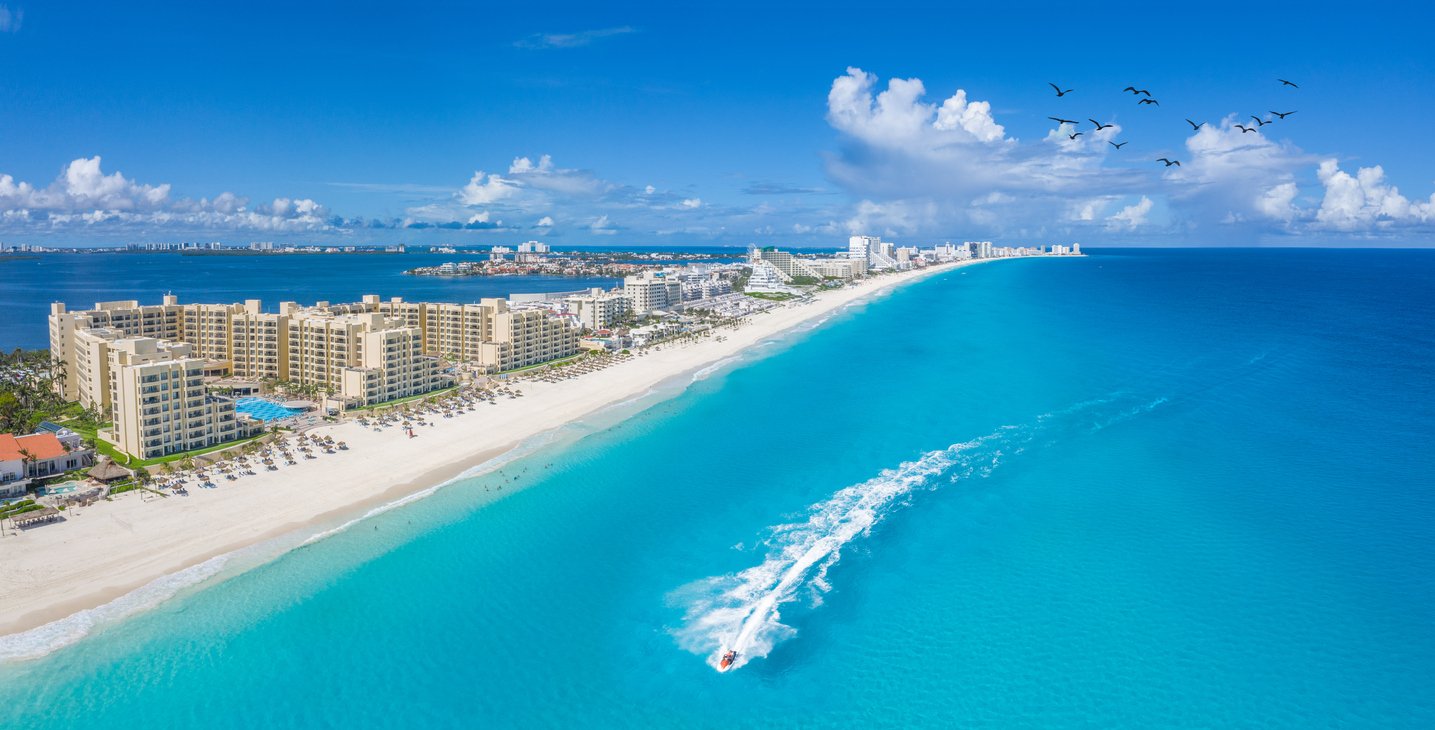The 8 Coolest Latin & South American Cities: Fun, Chic & Unique!
Latin America (and South America) is home to cities that combine affordability, nightlife, history, rich culture and gorgeous beaches, resulting in a mix of unforgettable experiences. It a continent with cities that often ooze ‘cool’ without even trying – cities where memories of a lifetime are made, relationships are forged and friends are made with ease.
And if you are looking for a fun time in one of the world’s most interesting and culturally-rich places, then the following list of Latin & South America’s coolest cities is worth checking out.
From afterparties in Argentina to salsa dancing in intimate homes in Cuba, ice bars in the Patagonian mountains and surf-towns in Peru. These cities will definitely catch your eye and get you excited about visiting!
1. Rio de Janeiro, Brazil
Standing tall on top of Corcovado Hill, the iconic 38-meter Christ the Redeemer statue will let you know that you have arrived in Rio de Janeiro.
This city perfectly defines vibrant. Brazilians call it the ‘marvelous city’ for a reason: the beach, music, skyscrapers, and festivals make for a place where there is never a dull moment.
Copacabana and Ipanema are the main neighborhoods. Their beaches are a continuation of one another but are separated by the Arpoador Stone, located in a small peninsula of the same name. Their natural beauty makes them postcard-worthy: not only do they have the Caribbean beach look—turquoise water, white sand, and palm trees—but they are also surrounded by mountains and different kinds of vegetation. The contrast with the urban area is spectacular.
One of the mountains that skirt Copacabana and Ipanema is the Pão de Açucar. You get to the top by taking the cable car, where your jaw will drop at the impressive city sightings. This is also the case for the previously mentioned Corcovado Hill. Doubling Pão de Açucar’s height, this hill offers scenic views of the whole city, including the beaches and the bay.
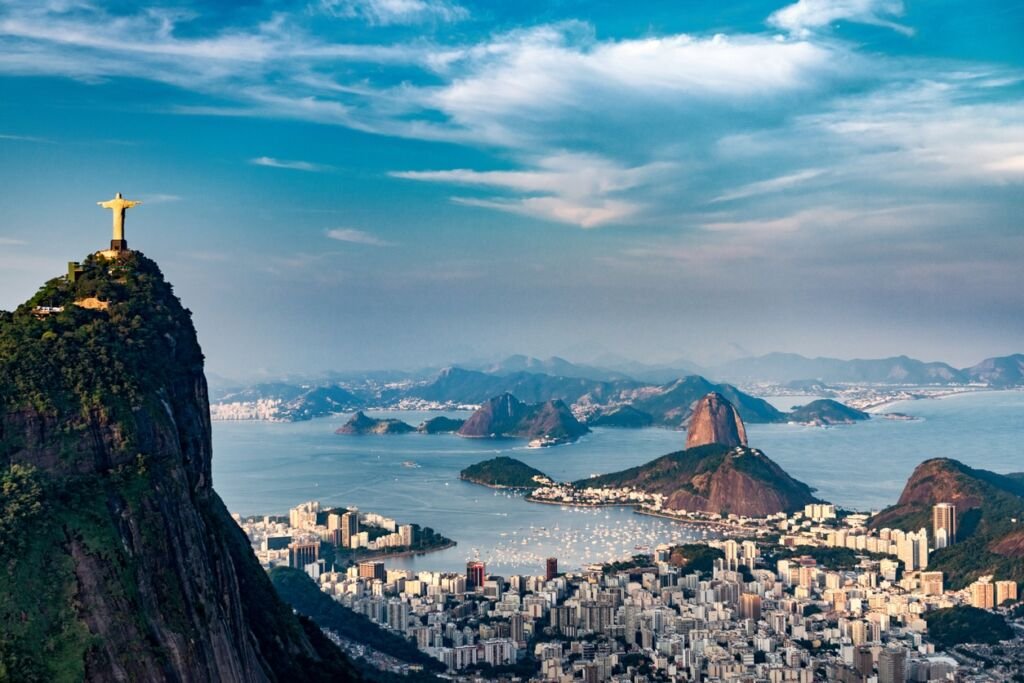
While Ipanema is a luxurious and quieter neighborhood, Copacabana is colorful and vivid. Along its coastline runs the famous wavy mosaic pathway, where you can buy authentic Brazilian caipirinhas and coconuts from beach bars.
After a fantastic day of tanning, swimming, and playing beach volleyball, you may want to hit the town. Lapa and Botafogo boast the best nightlife in Rio, and possibly the whole of South America: there are samba clubs, pumping bars, pubs, and nightclubs, where you’ll dance the night away, eat, and meet many locals.
As if stunning landscapes and fun nightlife weren’t enough, Brazilian culture and activities add so much more to your trip.
Rio’s carnival is considered the greatest outdoor show in the world and one of the main cultural attractions. The parade takes place in the sambodromo and consists of a competition between samba schools: they build gigantic floats, put on impressive rhinestone and sequin costumes, and dance to samba while millions of spectators soak in the joy and color this celebration spreads. The festivities last four days at the end of February or early March, during which the whole country rejoices.
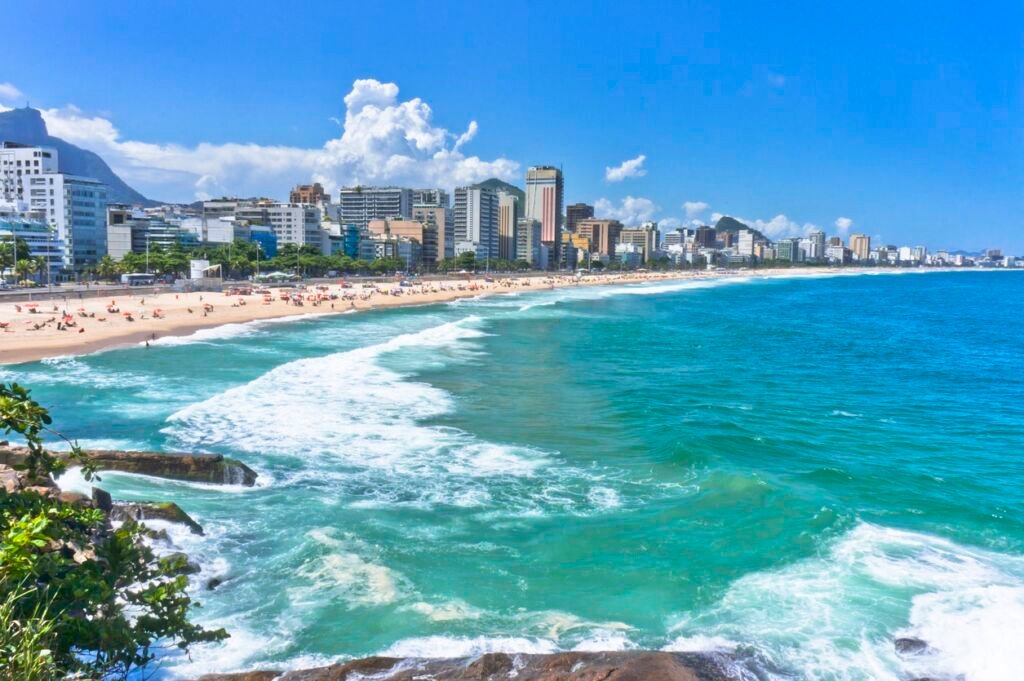
2. Buenos Aires, Argentina
Buenos Aires is the capital of Argentina. Contrary to Rio de Janeiro, its appeal doesn’t reside in beautiful landscapes and beaches but in exciting nightlife and hectic energy.
Buenos Aires is the city that never sleeps: locals go out to dinner around ten and dance in nightclubs from 1 to 6 in the morning. Some of them, mostly the young, continue partying until 7 or 8 in what they call afters, which generally take place in homes.
Palermo is a good place to immerse yourself in this lifestyle. In the first place, Plaza Cortázar, popularly known as Plaza Serrano, is the heart of bohemian Palermo Soho. Lit by fairy lights and colorful LED signs, it is surrounded by dozens of pubs, bars, and restaurants. A perfect exponent of the square’s atmosphere is Behind Bar. Live DJs set the tone of the night with varied music genres while customers eat tapas, sip a beer or quality cocktails, and dance.
If you are looking for a wilder night out, Palermo hosts the most popular nightclubs in Buenos Aires. You can find them in streets like Honduras, Niceto, Santa Fe, Del Libertador Avenue, and Costanera Avenue. It is worth mentioning that Argentinians like to dress up when going out, and many clubs have an implicit dress code.

Puerto Madero, a reformed port area, is one of the most exclusive Buenos Aires neighborhoods. Apart from having its own naval center and glass skyscrapers, it harbors the highest rooftop bar in the city: Crystal Bar. At 128 meters in height, you get sensational panoramic views of the country’s capital while enjoying gourmet cuisine and delicious sparkling wine.
Nightlife and gastronomy are not everything Buenos Aires has to offer, though. Corrientes Street displays numerous theatres, and two blocks from there, you can find the Colón Theatre. Being one of the most prestigious opera houses worldwide, it hosts various shows, among which ballet stands out.
Although a huge metropolitan capital, Buenos Aires also has green areas like Parque Centenario, Jardín Botánico, Parque Chacabuco, Plaza Italia, and Plaza Francia, among hundreds of other squares. It is nice to take a break from the busy concrete streets and relax on the grass for a while.
San Telmo, La Boca, Recoleta, and Microcentro hold the most culture among all the neighborhoods: tango, street artists, parrillas, steak, and markets will show you what makes Buenos Aires the fascinating and fun city that it is day and night. (Related: An Argentinian’s Guide To Backpacking In Argentina).

3. Mancora, Peru
Mancora is a well-known but often overlooked laid-back surf town. This is good news for folks who prefer less crowded beaches.
Most people are only aware of this small city’s nightlife. The truth is that Mancora’s wildlife is extraordinary and makes it ten times more enticing to visit.
In July, humpback whales reach the Pacific Sea and make their arrival at Los Organos beach. They stay there until October comes. During their stay, travel agencies offer whale-watching tours: you hop on a boat that takes you a bit further into the ocean, in this way getting closer to the imposing whales.
The other animal that lives on the Peruvian coast all year long is the green sea turtle. Swimming with turtles is an unforgettable experience you won’t want to miss. The whale-watching tours usually include this activity as well. If you own snorkeling equipment, you can do it yourself.
However, keep in mind that these animals are an endangered species. Don’t chase them or touch them since it stresses them. This might force them to leave Mancora’s coast for good and stop hatching eggs there.
Water sports are an available activity as well: you can take kitesurfing lessons and join the surfers that choose Mancora’s peaceful beaches to perfect their skills.
If you are interested in nightlife, you can watch the sunset from one of the beach bars or attend a party hosted in one of the hostels. Loki Mancora is the most crowded themed party: it can take up to an hour to register as a visitor. To save waiting time, you can do it before the party starts.
To enjoy your night safely, locals recommend avoiding the beach and the shady dark roads at night. Staying on the main street is the smartest decision.

4. Valparaíso, Chile
Valpo, as the locals call it, is a Chilean port city. The whole city is a view in itself: hundreds of colorful houses staggered along the hills facing Valparaiso Bay. It is even more magical at night when all the streets, homes, and boats light up.
Wandering the city alleyways is a must. It’s like visiting a huge outdoor museum. Everything—walls, doors, stairs, and floors—is covered in striking street art. Spray paint and mosaics are the most common techniques.
While doing this, you will also be touring the 42 hills Valparaiso lies upon. In case you become tired of all the walking, the city counts on five elevators that connect different spots. For instance, the Reina Victoria elevator takes you to Paseo Dimalow, located in Alegre Hill, where you will find various bars, restaurants, and craft shops.
Tourists always praise the city’s nightlife. Valparaiso has many fun pubs with bay views and nightclubs near the port. The parties usually attract young crowds due to the large student population that lives in the city.
After enjoying all the lookout points, the panoramic views, and the heavy partying, you can travel 10km and visit Viña del Mar and enjoy its beaches. It is a better alternative to Valparaiso since there are always fishing boats arriving on the bay.
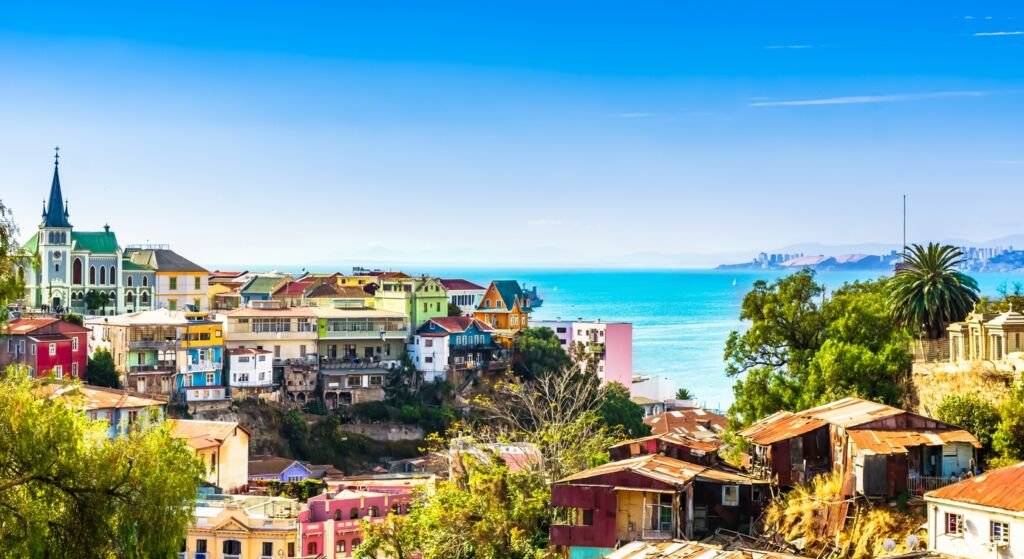
5. Cancun, Mexico
Located in Yucatan Peninsula, Cancun is home to some of the most beautiful beaches in the world. Their beauty alone positions this city as one of the most popular destinations in Latin America.
However, beach life is only a small part of Cancun’s charm. When university spring breakers began frequenting the city, its nightlife started evolving into what it is today.
Zona Hotelera, where the majority of the resorts are, has a Party Center. What is it? A block where Mexican restaurants and open-air clubs such as Coco Bongo make your night a fun one. If you prefer to attend a show instead of clubbing, you can attend JOYÀ by Cirque du Soleil. The extravaganza takes place at Vidanta Theatre. Prepare to be on the edge of your seat watching the thrilling stunts.
Nature lovers can also have the time of their life in Cancun. The options are endless including: snorkeling underwater museums and exploring the remains of a shipwreck, quad-riding across the dense Mayan jungle, diving in cenotes, and swimming with whale sharks – as we’ve written about before. Once-in-a-lifetime experiences that you won’t find anywhere else.
Theme parks, such as Xcaret, Xel-Há, and Xplor, make Cancun an even more fun city for adventurers. You can drive off-road vehicles, go rafting and swimming across unbelievable underground rivers, and go zip lining. Theme park tours usually include a trip to the Rivera Maya and Chichen Itzá ruins, crucial elements of both Mayan and Mexican culture.
Just a two-hour car ride away from Cancun appears the paradisiacal Holbox Island. Highly protected by the Mexican government, it has some of the most peaceful and untouched beaches. It is prohibited for any vehicles other than golf carts to circulate on the island and for large hotel and supermarket chains to build edifications that fail to respect the eco-friendly essence. It is the perfect place for achieving true relaxation. Just remember to remain respectful towards the island’s flora and fauna: littering and bothering the animals could disrupt the natural balance of this gorgeous destination.
Cancun, while geared towards tourists unlike other destinations on our list of coolest Latin and South American cities, has so much going on it’s impossible to get bored.

6. Medellín, Colombia
Apart from Bogota and Cartagena, Colombia is home to the incredible Medellin. The vibrant capital of the Antioquia department is a valley located in the Andes central mountain range.
Medellin is a varied city: the urban area, filled with thousands of buildings and brick houses, contrasts with the countryside towns, like Guatape. Once a farming village, it is now turning into one of Medellin’s tourist attractions. Along the romantic cobblestone streets, the colorful houses will illustrate Medellin and its locals’ history, beliefs, and patriotic symbols through paintings called zócalos.
If you’re up for a little adventure, you can climb El Peñon de Guatape, a 220-meter stone, using zig-zag staircases. Once you get to the top, the view of the Guatape reservoir—small green islands surrounded by blue lakes—will astonish.
You can reach this and other towns by taking the coolest public transportation: the Metrocable. It is a cable car that connects the city center with the outskirts and the rural area. This innovation allows you to move comfortably around the city while admiring its beauty from a bird’s-eye view perspective.
Near San Juan Avenue and Plaza Mayor, the fascinating Barefoot Park invites you to take your shoes off and unwind after a hectic day in the city. There are different types of textures you can walk on and feel: grass, sand, rocks, and water. Designed according to the principles of reflexology, the park aims to better people’s general well-being and promote relaxation.
There are districts in Medellin where nightlife is the specialty. El Poblado is one of them, where you can find bars to jumpstart your night. Barrio Colombia and Las Palmas Hill have VIP nightclubs and restaurants, while 33 Street and La 70 Street offer salsa clubs and more accessible discos.
The greater part of the nightclubs close at 4am, and the salsa clubs a little earlier. Generally, there is no dress code. It is the perfect city for laid-back partying and learning a few basic salsa steps, surrounded by the most cheerful and welcoming locals.

7. Havana, Cuba
When you arrive in Havana, you will feel like you are entering a different reality. Vintage cars from the 1950s and colonial buildings will take you back in time, while the beaches offer a peaceful retreat from the agitated city.
Two particularities this city possesses are its castles. In the mid-sixteenth century, Havana received multiple military and pirate attacks. El Morro Castle and the Castillo de la Real Fuerza de La Habana were built to defend the city against invasions. They both operate as war museums now: you can enter them and see dungeons, barracks, and historical items retrieved from the sea. The castles also provide all-encompassing views of La Habana and the ocean.
These castles are located in Havana Vieja, the most important colonial center in America and the Caribbean. So is the Malecón Habanero, a promenade that runs along the north coast of the Cuban capital, Havana Bay. Watching the sunset as the sea glistens and the neo-Moorish buildings boast their colors behind you is a wonderful moment this city gifts you.
Havana has many squares, such as Parque Central. This park is surrounded by iconic Cuban attractions: El Floridita is a bar of worldwide recognition, where the famous writer and journalist Ernest Hemingway used to be a regular customer. La Casa del Ron is a museum and bar that shares the story and the making of Havana Club rum. The smell of cigars, coffee, and wood creates an atmosphere like no other.
In the city center, salsa beats provide music for your stroll. So it is only right to take a salsa class to soak in everything Cuban culture and lifestyle have to offer. Many teachers share their innate talent and knowledge from the comfort of their own homes, accompanied by a small band that plays live. Once you get better at it, you can hit one of the many Havana salsa clubs, like Casa de La Trova.
La Habana has jazz clubs and cave nightclubs, such as La Cueva del Jabalí and Disco Ayala. The majority of them provide live spectacles that showcase Cuban music and culture. Similar to Buenos Aires, many clubs have a dress code. However, they close a bit earlier, at around 4 in the morning. Be ready to dance and have a blast in these vibrant venues.
After touring Havana, Cuban beaches allow the opportunity to relax. Guanabo and Bacuranao Beach are just a short drive from the capital. There are many more beaches, but these two are the most laid-back and least crowded ones. Although not idyllic, these beaches are still pleasant, and the nearby streets even have cafés and shops to try.

8. Bariloche, Argentina
To change it up and leave the sandy beaches and busy cities aside, we will talk about San Carlos de Bariloche. It is characterized by its versatility: there are plenty of activities to do all year round and it is never boring. This city is as fun as the ones listed above, but with a twist.
It is a Patagonian city located in southern Argentina. What it lacks in ocean views Bariloche makes up for in crystal-clear glacial lakes surrounded by snow-capped mountains. The scenery is highly photogenic, but the pictures rarely do it justice.
You can appreciate these views by heading down to the lakes’ beaches and admiring their beauty from that perspective. The shimmering water and the enormous mountains will leave you astonished. If you travel during summer, you can also take your swimsuit and dive in the (cold) water.
Summer’s hot weather also allows you to go kayaking. You can row towards other beaches and hidden cascades. Many of the guided tours are done in Nahuel Huapi Lake.
But the best part about Bariloche are the adventure sports. Inside the Nahuel Huapi National Park stands the Cerro Catedral. This mountain offers ski and snowboard slopes that you can reach through a vertiginous chairlift ride. Anyone, beginners and experts, can enjoy the slopes.
When in Cerro Otto, another main sports center, make sure to try sledding, ziplining, hiking, and mountain biking. The mountain also has a Nordic ski center, where you can ride snow motorbikes and do snowshoeing. At the top, there is a 360° rotating café. While sipping hot chocolate, you can see Nahuel Huapi Lake, the Andes, and the city center, among many other Patagonian wonders.
Visit the Centro Cívico, a building complex in the city center, where the picturesque buildings are made out of stone and wood. The Nuestra Señora del Nahuel Huapi Cathedral, which you can visit for free, stands out because of its neo-gothic architecture.
Bariloche is well-known for the quality of its chocolate, so it makes sense that it has a Chocolate Museum. It is also located in Centro Cívico. It offers chocolate sculptures and didactic expositions about chocolate’s history and its elaboration process.
Bariloche also has six massive multistorey nightclubs where parties are thrilling: By Pass, Roket, Cerebro, Grisú, and Genux. They are located in the city center, alongside breweries and craft beer pubs, casinos, movie theaters, wineries, homemade food restaurants, and the renowned chocolate shops—Rapa Nui is highly recommended.
Bars abound in Bariloche. The most exciting one is Ice Bariloche, where absolutely everything is made out of ice: the seats, the tables, and the glasses. But don’t worry, the staff will give you thick water-proof coats to keep you comfortable.


